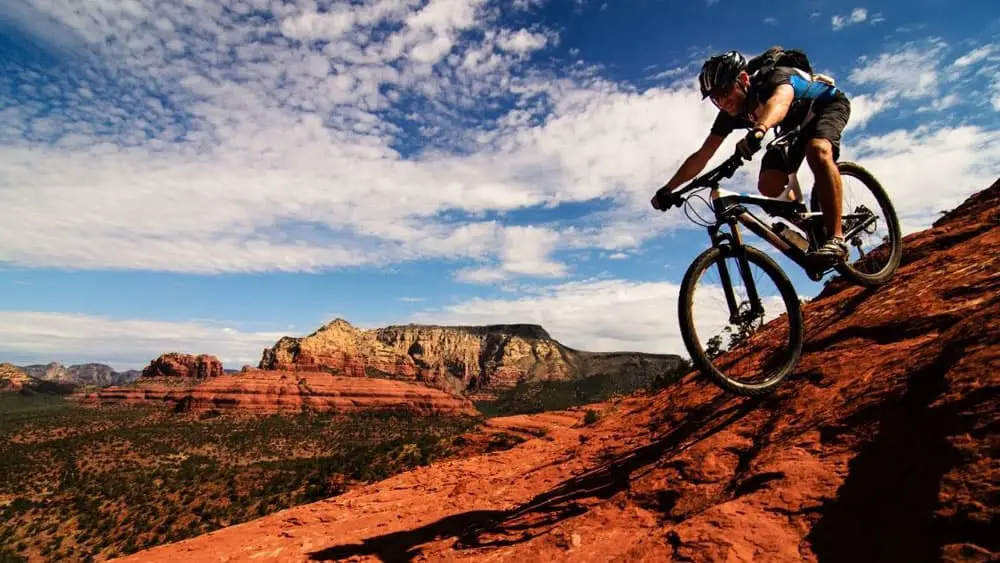
Mountain biking is a form of cardiovascular exercise that supports muscle toning and strengthening and improves overall body balance and coordination. It’s also the type of activity that could bring you closer to nature, build networks through group rides, and boosts your competitive side.
This article aims to help you learn the basics of mountain biking. And prepare you as you try out this exciting and extreme sport. This post includes the following:
- Mountain Bike Types
- Mountain Biking Styles
- Mountain Biking Essentials
- Mountain Biking Tools
- Mountain Biking Basic Skills
MOUNTAIN BIKE TYPES: CHOOSE ACCORDING TO BUDGET AND TERRAIN
Since you choose mountain biking as a sport, the main equipment that you will be needing is, of course, a bike. There are two general types of mountain bikes – full-suspension and hardtail.
Full-suspension Bikes
Full-suspension bikes have suspension in both the front and the rear, while hardtail bikes have suspension only on the front fork and not the rear.
Due to full-suspension bikes’ features, they can provide comfort and better traction when riding on more challenging and technical terrains. They are also good at absorbing bumps if you want to carry more speed during these challenging rides. Because of this, it’s no brainer that they are also more expensive than the hardtail bikes. So if you think you are committed to this new sport and are foreseeing to take on demanding terrains in the long run, plus you have the money to spend, then starting with this type of bike may be the right choice for you.
Hardtail Bikes
On the other hand, hardtail bikes are more budget-friendly and weigh less than full-suspension bikes since they have fewer parts and have a more straightforward design. If you want to go on smoother terrains, cover longer distances, and require low maintenance, choose hardtail bikes. If you still have an extra budget, you can spend it on upgrading your hardtail bikes with better components.
Many bike enthusiasts would encourage buying hardtail bikes first, then get a full-suspension bike as your second bike.
Buying your mountain bike, like purchasing any other product, needs proper research. Make sure to buy the bike that fits your budget and the type of terrain you will be riding on.
You can do your research online; however, I recommend going to your local bike shop and getting an expert’s opinion. Some would suggest borrowing a friend’s bike first or try out bike rentals so you would get a “feel” on what would suit you best before jumping into a purchase.
It would also help you learn some of the basic technical terms used in the sport. It will be handy in dealing with bike shop sellers and building networks with your co-bikers.
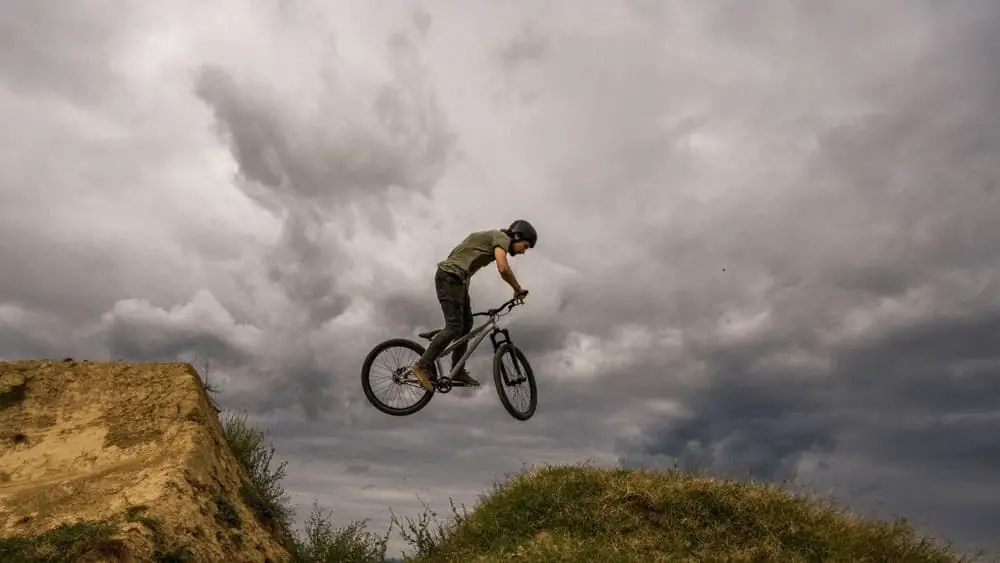
MOUNTAIN BIKING STYLES: TRAIL RIDING AT ENTRY-LEVEL
Next is your biking style. There are different mountain biking styles you can try depending on your expertise and adventurous spirit. Trail riding is the most common and most popular type for entry-level mountain bikers. It’s a non-competitive form of mountain biking that involves riding on off-road, unpaved tracks, hiking trails, hillside, and forest roads. These rides can be done in a day or several days, depending on the route difficulty.
Trail Riding
Biking experts recommend to start with trail riding and choose a beginner-friendly trail to test your ability. One good tip if you are all new to this sport is to go to your local bike shops and consult about some of the go-to biking trails near your area.
Start with easy trails (or “gentle” ones as they would call it) and take on more challenging and technical routes with demanding ascents and steeper descents as you improve your handling and climbing skills.
Terrain Types
Note that there are different types of terrains, too. We have a single track, double track, and bike parks. Single tracks are those narrow, winding, shoulder-length roads that are the best-offered traversing roads for that particular landscape. The double track is just literally twice the length of a single track and offers less technicality. On the other hand, a bike park is a built-in park for the sole purpose of serving the sport, complete with obstacle courses varying in different technical levels.
If you have already picked up the grove and your adventurous spirit is still lusting for more speed and thrill, then you can now explore other biking styles such as Cross Country, All Mountain (Enduro), Downhill, Free Ride, and Dirt Jumping.
Cross Country
Cross Country is a mountain biking style that involves a lot of uphill climbing and suitable for people with the need for speed. This event usually covers long distances and consists of a lot of pedaling. Cross Country requires more physical power than technical ability.
Downhill
Downhill style is a mountain biking style catered more for the adventurous souls and the younger generation. These events are usually held in urban bike parks, featuring jumps, drops, rock gardens, and other obstacles.
All-Mountain
All-mountain style is an aggressive, downhill, and technical riding style usually held in both single and double-track trails. It is almost a hybrid of cross-country and downhill styles.
Free Ride
Freeride style is closely related to downhill and dirt jumping, whereas it will involve more tricks and will require a great deal of technical expertise. As the name suggests, this type of style has no set of rules, goals, and course.
Dirt Jumping
Dirt jumping style (also known as freestyle) is for the daredevils. It is a style where you ride over “jumps” made of soil and dirt, seemingly attacking it and getting airborne, landing back properly, and carrying on cycling.
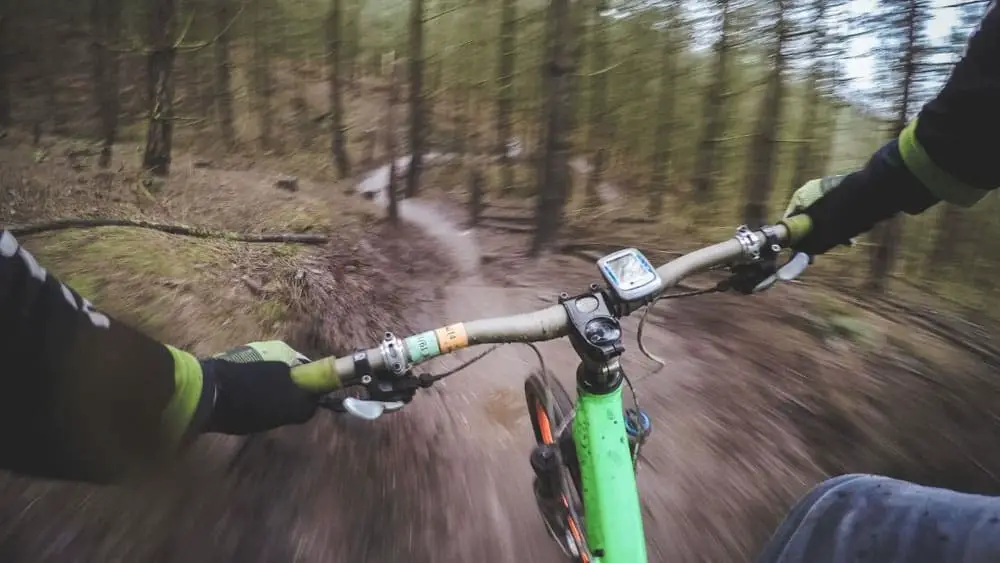
MOUNTAIN BIKING ESSENTIALS: SAFETY FIRST
Now that you have your bike and your style, it does not stop there. You still need to gear up for your safety and protection during your ride. You need to buy a couple more stuff. Make sure that these are all accounted for in your budget, too.
For the Head
First up is your helmet. This helmet gear is an essential requirement in bike riding, off-road or not, motorized or not. During a bike ride, you expose your body to external hazards, and engaging in an extreme sport is like inviting and welcoming them in. So never compromise on your safety and make sure that you invest in a good quality snug-fit helmet.
For the Hands
Always wear cycling gloves for better grip and protection from blisters. Since you are in an extreme sport, the tendency is to get your hands sweaty. If you are not using gloves, chances of hand slips and consequently accidents will be inevitable. Gloves also act as the first line of defense during crashes (which, of course, we want to avoid as much as possible), preventing cuts and scrapes.
For the Eyes
Sports glasses (or sunglasses) are a must to protect your eyes from the wind, dust, tree branches, rocks, and other minute objects harmful to your eyes. In this sport where concentration and focus matter, your eyes are very important to be free of any obstruction.
For the Feet
There are two types of mountain bike shoes – the flat pedal shoes and the clipless pedal shoes. Most biking enthusiasts agree that flat pedals are better to be used by beginners. Hence, dedicated flat pedal mountain bike shoes are the best option. Clipless pedals require practice and training and are used by more advanced bikers.
If you are not too invested yet in buying dedicated mountain bike shoes, skate shoes are another excellent option. It is used in most sports because of their durability and protection compared to regular sneakers.
As for the socks, there are also custom-made mountain bike socks, but regular non-cotton tall socks will do.
For the Bottom
Safety and comfort go hand in hand. Since mountain biking is capitalizing more on the bottom part of the body, it is imperative to likewise invest in a good pair of cycling shorts both for your comfort and protection during the duration of your ride. EVO Sportswear even states that “If there is one piece of mountain bike clothing that is essential to buy, it’s a good pair of chamois or liner shorts – everything else is a “nice to have,” but these guys are a necessity.”
For the Top
This is rather the most effortless piece to buy since it does not require much consideration like the rest. Just avoid cotton clothes and opt for sports jerseys with materials that help regulate your temperature during your ride. Also, bringing a lightweight rain jacket if the weather takes a turn for the worse is a boy scout’s instinct.
For the elbows/knees: This is already more than the basic requirement for protection but if you still have the budget for it, adding elbow and knee pads, especially for beginners, can be reassuring.
Other Essentials
Hydration Pack: Like any other sports, hydration plays a vital role in mountain biking. And since this is considered an extreme sport, you will be sweating profusely and losing a lot of fluids during your ride. It is vital to bring a hydration pack or a water bottle during your ride.
First Aid Kit: As much as we want to avoid accidents, we never know when and if it would happen. The only thing we could ever do is to prepare for it. Your first aid kit may include but is not necessarily limited to some aspirins, antiseptic solution, cotton pads, gauze, Band-Aid.
Cellphone and Wallet: This is a no brainer – No one leaves their homes without these two, even if you are going somewhere without a satellite signal. This is crucial for your identification and for contacting family members and persons of authority if anything happens. On the other hand, you can also install biking apps that help track your progress during rides.
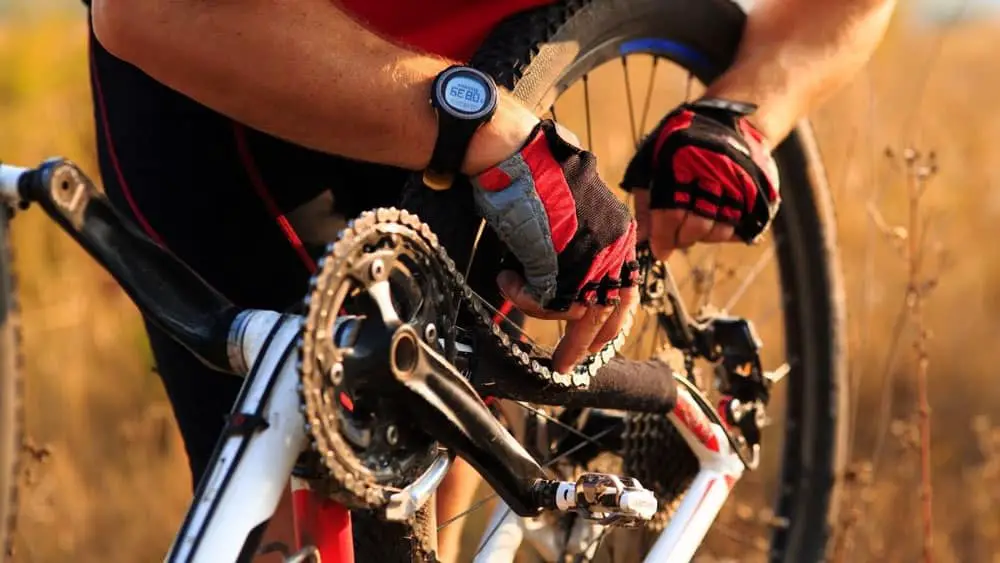
MOUNTAIN BIKING TOOLS: PLAN FOR CONTINGENCY
You know what they say, “failing to plan is planning to fail.” This is true in all scenarios and, most significantly, if you are into extreme sports. At the very least, you need to know how to change a flat tire and have the necessary tools for it, such as:
- Tire Pump and Tire Lever. Hand pumps come in various sizes and shapes, so make sure that you choose one that fits inside your backpack.
- Spare Inner Tube. It’s easier to swap the tubes first as an initial solution to your flat tires, then patch the succeeding ones using the patch kits.
- Patch Kit (comes in two types – glue patch and glue-less). Most biking enthusiasts prefer the glue patch even if the glue-less one is a quick fix since the former is more reliable.
- Plug Kits. If there’s a hole too large for your patch kits, then plug kits will come in handy.
- Multi-Tool. This is usually a favorite gift for people who love the great wilds. It’s compact, it’s handy, and it has solutions for almost all catastrophe.
- Head Lights/ Lamps. This is a crucial tool, especially if you happen to be caught by nightfall in your ride.
Below are some other suggested tools you could bring as well:
- Insect Repellant
- Toilet Paper / Paper Towels
- String / Cord
- Duct Tape
- Cable / Zip Ties
- Compass
- Derailleur Hanger and Cable
- Spoke Wrench
- Chain Quick Links / Master Links
However, take note that while it is important to be prepared in all possible events, you need also to make sure that these additional tools do not add too much weight and drag you down during your ride. This may do you more harm and prevent you from having fun, which should be your ultimate goal.
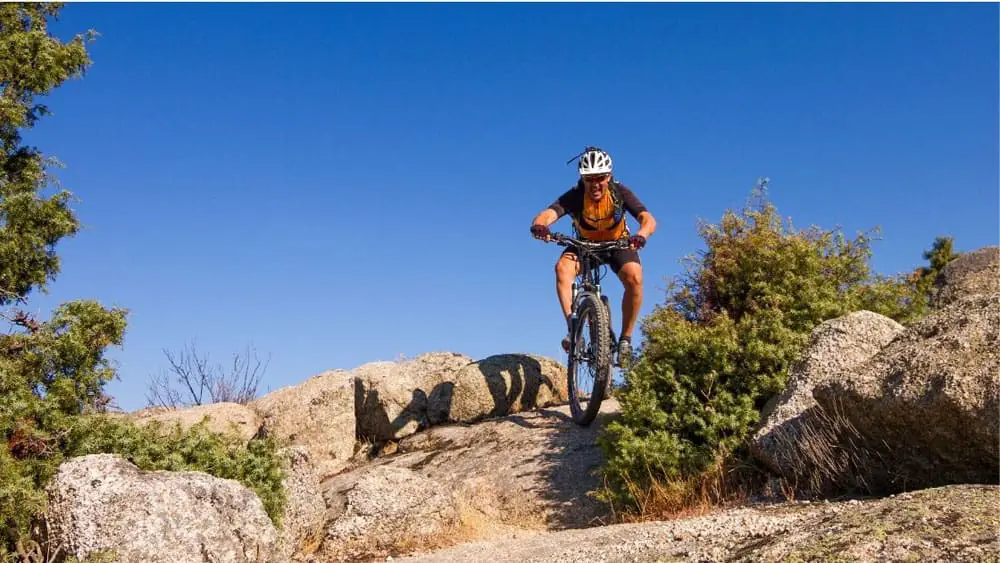
MOUNTAIN BIKING BASIC SKILLS
You know the style. You got your bike. You’re all geared up. Now, you need to pick up some skills:
Balance
As you might have already figured out, Balance is the first and crucial skill in the language of any two-wheel ride. So if you already learned how to cycle, then congratulations, you’ve already ticked off one fundamental skill.
Projecting
Reading the path or projecting is one of the important skills you need to master, actually not only in mountain biking but in almost any other kind of ride as well, two-wheel or not. Instead of focusing on the front wheel of your bike and dodging every obstacle that “surprises” you along the way, look further ahead of your bike (or whatever vehicle you are in, for that matter), find your line, and focus on the road you’re trudging.
The next three skills are the same ones you need to pick up in riding any other vehicle: pedaling (gassing up), braking and shifting.
Efficient Pedal Strokes
Learning how to do efficient pedal strokes is essential in building longer endurance and saving energy during your rides. As you become more experienced, you will know when to slow down and speed it up, when to apply more power, and when to chill it out.
Adjusting your pedal stroke is based on the type of terrain you are riding and allows you to conserve more energy, especially if it is a long ride. This concept is consequently leading us to another skill, which is learning how to brake correctly.
Braking
Just like pedal strokes, braking is a skill that requires proper timing. Sometimes it’s going to be too soon or too late, too much or too little. Learning how to control your brakes will not only make your ride more pleasant and comfortable but will also not disrupt your biking momentum.
Shifting
Proper shifting, on the other hand, allows better control during an uphill or downhill trail. Using the right gears where it is intended to will also avoid wear and tear for your bicycle.
As a beginner, it is recommended to simultaneously practice these three skills to build muscle memory and avoid panicking during the actual ride.
Body Positioning
Last but not least is body positioning. Learning how to properly position your body depending on the type of terrain you’re riding will make your ride more gratifying. Use a Neutral position for the non-technical somewhat smoother parts of the landscape while using the Ready position (or sometimes known as the Attack position) for the more challenging terrain.
If you manage to master all these skills successfully, other advanced skills will be learned along the way, such as cornering, unweighting, roll downs, bunny hops, wheelies, and skinnies.
IN ESSENCE
The most important thing to remember when unlocking any new skill is the commitment and perseverance to learn. Consistency is always the key to achieving any goal. Plus, do it because you want to. Do it because you want to have fun. Having fun is probably the most important tip anyone could ever get in the field of picking up a new hobby, beginner or not.

